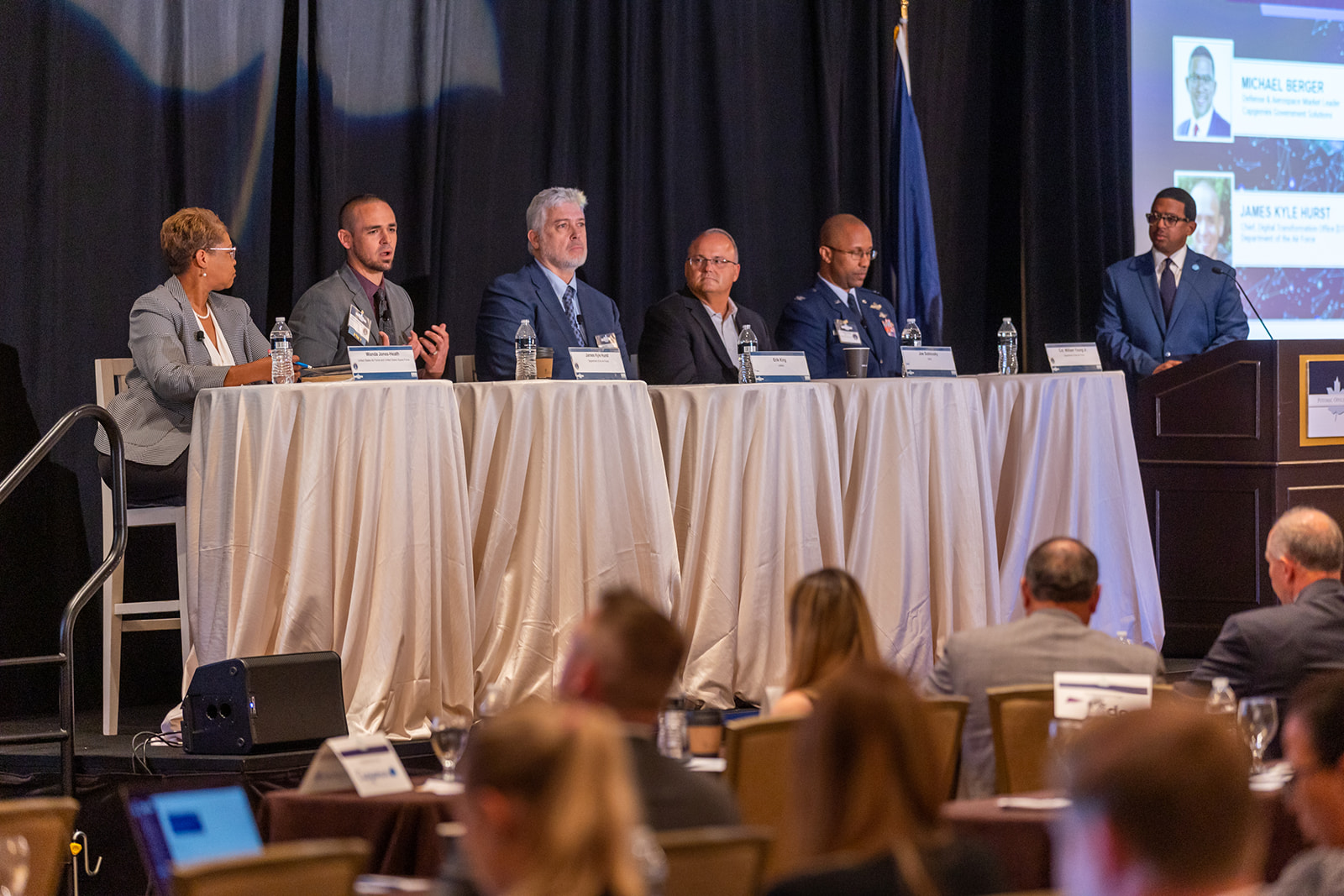When asked about the human part of the equation in digital transformation, Wanda Jones-Heath says organizations have to “leave the old thought behind.”
“Today’s environment will not let us win against China in the future. And we have to think about, as we become more digital, become more automated, what are the things that we can do better?” Jones-Heath, principal cyber adviser for the U.S. Air Force and Space Force, continued.
James Kyle Hurst, chief of the digital transformation office at the Department of the Air Force, believes that “shifting the paradigm” is important in terms of holding up human operators’ side of technology evolution.
To do so, Hurst says government and military have to accept some level of risk in new policy and technological adoptions, measured by how beneficial a potential ROI or return on investment, might be. Additionally, Hurst cautions that those in charge of finding applicants for cyber-related jobs not be “overly prescriptive” about hiring solely based on qualifications or experience, and that he has found seeking out candidates based on character has paid dividends.

Jones-Heath and Hurst shared their comments in a recent panel on the Digital Battlefield hosted by the Potomac Officers Club at its annual Air Force Summit. The panel, which was composed of the aforementioned executives and three other experts in their field, discussed the digital future of the joint forces and their implementation of multi-domain environments.
Directing his comments toward the many members of the government contracting industry in the audience, panelist Col. William Young, commander of the 350th Spectrum Wing of the Department of the Air Force and self-proclaimed “uber nerd,” encouraged partnership between industry and government.
Young cited “increased willingness to collaborate across organizational silos of excellence” as crucial to attaining digital transformation goals and executing best practices.
“We need our industry partners also to bring the best and brightest to the table to help us get to where we need to be, even if it means dragging us [government] sometimes because we can’t see and won’t open up,” Jones-Heath stated frankly.
Erik King, senior solutions architect and vice president at Leidos, added that he believes both industry and government could stand to “lower the barrier” for new technologies to be introduced, which he believes will in effect strengthen interoperability. According to King, this might be realized by incorporating lower level classifications for some missions and processes.
When moderator Michael Berger, defense and aerospace market leader at Capgemini Government Solutions, queried the panelists about Department of Defense Secretary Lloyd Austin’s remarks regarding integrated deterrence, Joe Sublousky commented that data sharing is a pivotal aspect of achieving the function.
Sublousky, who is currently vice president of the unit overseeing Joint All Domain Command and Control at SAIC, posited the crucial data questions to answer as “how do we store it? How do we articulate it? How do we get it ready? And be ready to consume, but also produce for others?”
The SAIC exec, who came to the company with a military background, described how U.S. military standards shifted from “need-to-know” to “need-to-share” expectations during the timeframe of his service, largely based on changing attitudes toward data.
A little later in the panel, Young advised that industry and government collaborators not to “jump right away into the solution space, the physical architecture, rather than understanding the ontology.”
The Air Force Department commander illustrated that if military technologists take this top-down approach, money and effort will be saved.
“If we can bring security into the strategy stage and then be able to identify specifically what data’s important, why is it important? Which decisions does data support? Then we can begin to triage and develop a security architecture that supports the most important things,” Young asserted.




